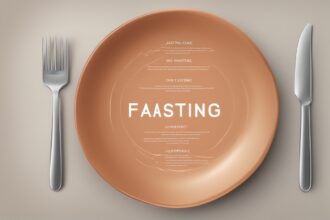Have you ever wondered how skipping a meal or two could transform your health? fasting, a practice as old as humanity itself, has gained massive popularity in recent years for its potential benefits like weight loss, improved mental clarity, and even longevity. But with so many fasting methods out there, how do you know which one suits your lifestyle and goals? In this comprehensive guide, we’ll dive into the most popular types of fasting, break down their benefits with scientific insights, and share practical tips to help you get started. Whether you’re a newbie or a seasoned faster, there’s something here for everyone looking to explore fasting techniques and harness their power for better health.
What Is Fasting, and Why Does It Matter?
Fasting is the voluntary abstinence from food and, in some cases, drink for a specific period. It’s not just about weight loss—fasting taps into ancient survival mechanisms in our bodies, triggering processes like autophagy (cellular cleanup) and ketosis (fat burning for energy). Research, such as studies published in the New England Journal of Medicine, suggests that fasting can improve metabolic health, reduce inflammation, and even support brain function. With various fasting methods available, you can choose an approach that aligns with your needs, whether it’s for physical health, mental focus, or spiritual reasons. Let’s explore the most common types of fasting and how they work.
Intermittent Fasting: The Most Popular Fasting Method
Intermittent fasting (IF) is arguably the most well-known among fasting approaches today, thanks to its flexibility and sustainability. Unlike traditional diets, IF focuses on when you eat rather than what you eat. Common protocols include the 16/8 method (fast for 16 hours, eat during an 8-hour window) and the 5:2 method (eat normally for five days, restrict calories to 500–600 on two non-consecutive days). Studies, like those from the University of Illinois, show that IF can aid in weight loss, improve insulin sensitivity, and lower blood pressure. It’s a great starting point for beginners because it doesn’t require drastic changes to your diet—just your eating schedule.
Here are some practical tips to make intermittent fasting work for you:
- Start with a shorter fasting window, like 12/12, and gradually increase to 16/8 as your body adjusts.
- Stay hydrated with water, herbal tea, or black coffee during fasting periods to curb hunger.
- Plan nutrient-dense meals for your eating window to avoid overeating or nutrient deficiencies.
- Listen to your body—if you feel dizzy or overly fatigued, adjust your fasting schedule or consult a healthcare provider.
Water Fasting: A Deep Detox Approach
Water fasting takes things up a notch by restricting everything except water for a set period, typically 24–72 hours or longer under medical supervision. This method is often used for detoxification and has been linked to benefits like reduced oxidative stress and improved cellular repair, according to research in journals like Cell Metabolism. However, it’s not for everyone—water fasting can be intense and may lead to side effects like fatigue or electrolyte imbalances if not done correctly. If you’re curious about this fasting strategy, it’s best to start with shorter durations and ensure you’re in good health before attempting it.
Alternate-Day Fasting: A Structured Challenge
Alternate-day fasting (ADF) involves alternating between “feast” days, where you eat normally, and “fast” days, where you consume little to no calories (often under 500). This method has shown promise in studies for weight loss and heart health, as noted in research from the American Journal of Clinical Nutrition. ADF can be a powerful tool among fasting methods, but it’s more restrictive than intermittent fasting and may not suit those with busy or unpredictable schedules. To succeed, plan your fast days around lighter activity levels and focus on hydration and rest.
Religious and Spiritual Fasting: Beyond the Physical
Fasting isn’t always about health—many cultures and religions incorporate it as a spiritual practice. For instance, Ramadan fasting in Islam involves abstaining from food and drink from dawn to sunset for a month, while Christian Lent often includes partial fasts or giving up specific foods. These fasting practices foster mindfulness and discipline, and studies suggest they can also offer health benefits like improved stress resilience. If you’re exploring fasting for spiritual reasons, consider integrating meditation or journaling to enhance the mental and emotional effects.
Here are a few ways to approach religious or spiritual fasting safely:
- Prepare your body by reducing caffeine or sugar intake a few days before the fast begins.
- Break your fast with light, easily digestible foods like dates or broth to avoid digestive discomfort.
- Focus on the purpose of your fast—whether it’s prayer or reflection—to stay motivated.
- Consult with a religious leader or health professional if you have medical conditions that might affect fasting.
- Balance fasting with rest, especially during longer periods like Ramadan, to maintain energy levels.
Extended Fasting: Pushing the Limits
Extended fasting refers to fasts lasting longer than 72 hours, often ranging from 5 to 21 days. This method is typically done under medical supervision due to risks like nutrient deficiencies or muscle loss. Proponents claim it can lead to profound benefits, such as deep ketosis and significant weight loss, with some research in Nature Reviews indicating potential anti-aging effects through autophagy. However, extended fasting isn’t a casual endeavor—it requires preparation, such as gradually reducing food intake before starting, and careful refeeding afterward. If you’re considering this among other fasting techniques, always consult a doctor or nutritionist first.
How to Choose the Right Fasting Method for You
With so many fasting methods to choose from, finding the right one can feel overwhelming. Start by assessing your goals—are you aiming for weight loss, mental clarity, or spiritual growth? Consider your lifestyle, too. If you have a demanding job or family commitments, intermittent fasting might be more feasible than alternate-day or extended fasting. Health conditions like diabetes or pregnancy also play a role, so it’s wise to check with a healthcare provider before diving into any fasting regimen. Remember, fasting isn’t a one-size-fits-all solution—experiment with different approaches to see what feels sustainable and beneficial for you.
In conclusion, exploring various fasting methods opens up a world of possibilities for improving your health and well-being. From the beginner-friendly intermittent fasting to the intense water or extended fasts, there’s a fasting style for nearly everyone. Backed by science, these practices can support weight management, boost cellular health, and even enhance mental focus when done mindfully. The key is to start slow, stay informed, and listen to your body’s signals. Have you tried any of these fasting approaches, or are you curious to start? Drop your thoughts or questions below—we’d love to hear about your journey with fasting strategies! And remember, always prioritize safety and sustainability as you embark on this transformative path.






